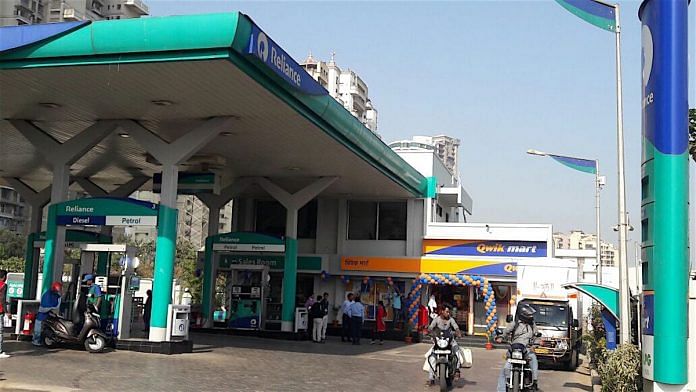A few days before Diwali, the Union government took a major step towards liberalising its policy on retail marketing of petroleum products. It is the biggest decision taken in this area in the last 17 years. In 2002, retail marketing of petroleum products was thrown open to the private sector provided the applicant would commit to investing at least Rs 2,000 crore in the petroleum sector. Last week’s decision has allowed any entity to undertake retail marketing of petroleum products provided its net worth is valued at over Rs 250 crore.
The expectation is that many non-petroleum players would be interested in retail marketing of petrol and diesel. Global giants like Total and Saudi Aramco may enter the Indian market. Even big retail chains could consider opening fuel outlets. This is because the earlier condition that a new player must have investments in the petroleum sector has been scrapped. But how successful will this policy liberalisation be?
It is clear that the retail policy liberalisation of 2002 did not yield the desired outcome. In 2002, the retail marketing network for petrol and diesel was monopolised by public-sector oil companies. There were 18,924 retail outlets then. In the last 17 years, these companies have added 39,000 outlets, taking the public-sector fuel retail outlets to 57,924.
Also read: India yet to find land for $60-bn oil refinery to be built by Aramco, ADNOC: Saudi minister
In contrast, the private-sector initiative has been poor in spite of the policy liberalisation in 2002. In these 17 years, only 6,700 fuel retail outlets were opened by the private sector, including 5,128 by Nayara Energy Limited (earlier known as Essar Oil), 1,400 by Reliance Petro and 145 fuel outlets by Shell India. The absence of a market-linked pricing system for many products during much of this period was one of the reasons for the private sector’s lukewarm response.
Thus, the demand for more fuel marketing outlets has been largely met by the state-controlled petroleum marketing companies. The compound annual growth rate (CAGR) in the sales of petrol and diesel in the last 17 years is estimated at 6 per cent. The CAGR of fuel retail outlets in the same period is just 7.5 per cent. And this growth could be maintained largely because of the public-sector oil retail outlets.
Last week’s decision followed the government accepting the recommendations of an expert committee that examined how the 2002 policy liberalisation impacted the oil marketing network. The committee had concluded that while the government should retain its power to authorise the entry of new players in the oil marketing sector, it should now relax those rules by letting any entity with a minimum net worth of Rs 250 core to set up fuel retail outlets. In line with the committee’s findings, the government also set a condition that the new players will have to set up at least 5 per cent of their retail outlets in notified remote areas within five years of the grant of authorisation.
There are, however, many questions over the effectiveness of the new policy. Monitoring how the new players will fulfil their obligation of setting up 5 per cent of the new fuel retail outlets in notified remote areas would introduce an element of discretion that can always become problematic and lead to politicisation in the grant of authorisation of new fuel retail outlets. The chances of such obligations-based policy incentives being misused are also quite high. Past instances of how the scheme for import concessions linked to export obligations was misused and poorly monitored should not be forgotten.
Similarly, there is room for further liberalisation in the new policy. There is no reason why the new players should not be allowed to sell petroleum products, obtained from different refineries, from the same outlet. As long as the new outlets maintain transparency and provide disclosure on which refinery’s fuel the consumer is buying, there is no reason why they are being mandated to sell fuel purchased from different refineries only through different outlets.
The more troubling question is that if the objective of the policy liberalisation is to usher in more competition in fuel marketing, then the government should also take the next step to remove opacity in the way public sector oil refineries are pricing petroleum products. Effective competition will be introduced once the new players, which have no access to their own refineries, can actually buy the fuel from the existing refineries. Such purchases will be difficult without a transparent pricing mechanism at the refineries.
Yes, the new players can import petrol and diesel and sell them at a price that can create competition for the public-sector oil refineries. But why not use this opportunity to introduce more reform in retail oil pricing by India’s state-controlled refineries. A consequence of such transparency would also facilitate the next move to allow different public-sector refineries to compete with each other on the final price at which they sell the petroleum products through their outlets. Once such reforms are introduced, the effectiveness of the latest move to allow new players to set up fuel outlets would improve enormously.
Also read: Bharat Petroleum sale will make Modi India’s No. 1 reformer. But reform by stealth won’t do




Socialist Modi doesn’t have the guts to completely privatize oil sector